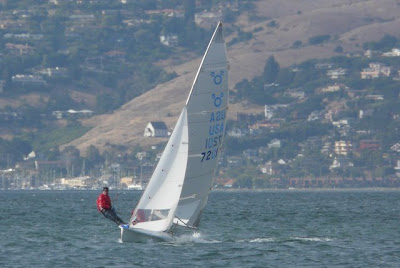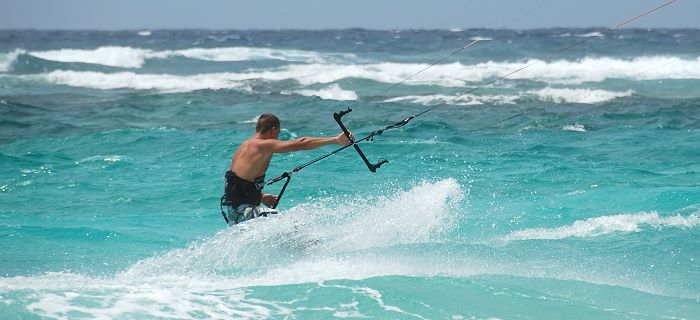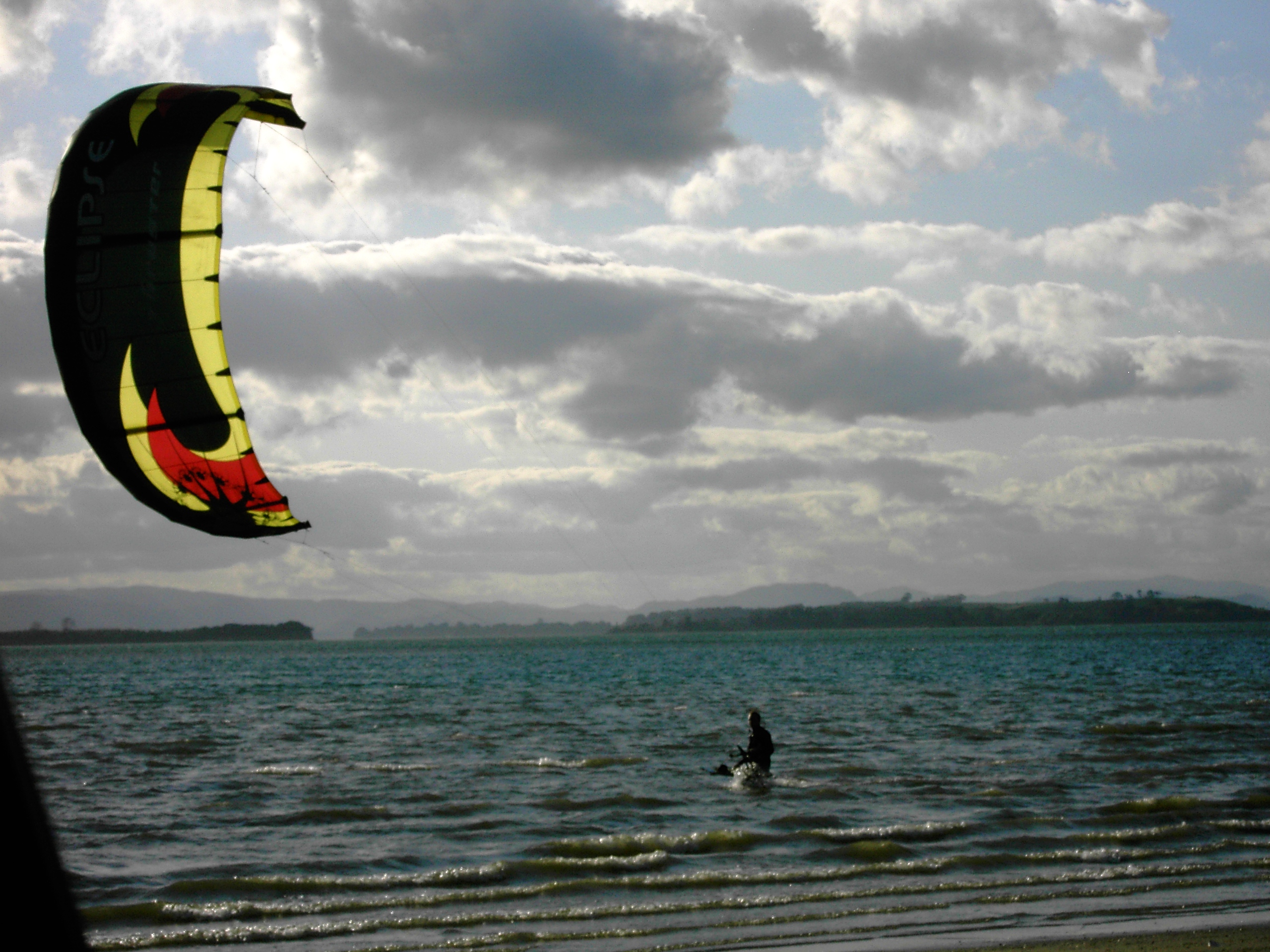Source(google.com.pk)
Kite Surf Fishing Biography
The Target Snapper Hook on the bottom of this rig is a great solution when smaller fish are stealing soft baits from more common rigs.
The floating bead trace a fantastic surf fishing rig and the best answer yet to prevent crabs and sea lice stealing baits whether you are surfcasting or fishing from a boat.
A conventional ledger rig for dropline fishing can be inclined to twist the traces around the main fishing line, try making the one below to prevent these tangles and make deep water fishing more productive
The Sliding Rig Two Hook Pilchard Rig
This is the best of the reef fishing rigs we have seen. Your hooks troll down the line to depth.
Sliding Fishing Rig
sliding fishing rig
The two hook pilchard rig is the answer to keeping soft whole bait fish on the hook.
Two Hook Rig
pilchard rig
Floating Bead Traces Reef Fishing Ledger Rigs
If you are into surf casting, kites, use a kontiki or longline then you must try the floating trace system.
Floating fishing rig
floating rig
The ledger rig is great for hapuku and a reef fishing rig which can be fished directly from a rod, or like a longline.
Deepwater fishing Rig
ledger rig
Floundering - Flounder Lights and Rigs
Find out everything you need to know about gigging for flounder.
Spearing flounder with underwater fishing lights is very easy and productive. Great tips on catching flatfish with a rod and reel plus tips on netting flounder
Flounder Fishing Index
Flounder Gigging Lights
Facts About Flounder
Salt Water Fishing Tackle For Flounder
Netting Flounder
Easy Flounder Recipes
Flounder Gigging Boats
Flounder Gigging South Texas
Kite Rigs for Surf Fishing
The following kite fishing rigs are two very productive methods for fishing much further offshore from surf beaches than you can cast a line. Paul's Kites have a massive range of kitefishing equipment and rigs to suit all surf fishing situations.
Dropper Rigs
Click for big pic
This style of surf fishing is only practical with kites and is the best all round surf fishing rig.
The Dropper Rig method is extremely versatile and can be fished over clear sandy beaches, be adapted to cast out other lines, fish ledger rigs on or near reefy areas or troll for kahawai and kingfish. Any boat technique can be done with a Dropper Rig from the shore.
Unlike the Bottom Longline which requires the mainline to be a specific lineweight , small kite powered Dropper Rigs can be made up on as little as 8kg line and run from a surfcasting rod right through to large kite powered rigs designed to tow out up to 20 hooks on 65 kg mainlines.
All Dropper Rigs are extremely versatile in their uses. The basic Dropper Rig configuration has the mainline and kiteline supported clear of the water out to the fishing position.
Fifty metres below the kite a separate line, (the dropper line) is attached to the braided cord junction that joins the mainline to the kiteline.
The dropper line drops down to a plastic bottle that is weighted to prevent the kite from lifting the terminal tackle out of the water.
The leader line extends from the bottle to the sea bed. The hook section, which is just like a mini longline, is connected to the leader line by a safety trace which should be no more than 80% of the breaking strain of the mainline.
The safety trace offers additional protection for the kites and mainline should the kitefisher unwittingly be fishing over rocky areas with the wrong terminal tackle or happen to hook into a few large sharks or stingrays.
If the gear is snagged or you hook something too big to land the safety trace snaps and everything except the hook section is safely recovered.
Careful consideration should be given to the number of hooks set . If too many fish are caught you could risk overloading the breaking strain of the safety trace and losing your catch.
Because the east coast and west coast fishes so differently it is safe to set more hooks on the east coast.The kite powered Bottom Longline method is similar to the old kontiki style of fishing.
On bottom longlines a heavy duty mainline of around 80 to 100 kg nylon is required. Lines weaker than this are unable to safely take the inevitable nicks and scuffs the mainline encounters over time as it runs out along the bottom.
The mainline is connected to the kiteline with a braided cord that has a flag sewn onto it. A two or four litre plastic bottle is attached to the braided cord and is filled with sand or water to prevent the kites from lifting the mainline and hooks off the bottom or out of the water completely in strong wind conditions.
Traces and weights are connected to the mainline as the kite tows the line offshore. The weights, clipped onto the mainline in front of the hooks, ensure the mainline is held hard on the bottom maximising the rigs fishing efficiency and also preventing the traces from wrapping around the mainline and becoming tangled during setting.
The Bottom Longline is an ideal system for the east coast.
This rig will tow out up to 25 hooks per set (the legal limit per longline in New Zealand) and while it is possible to operate a longline rig single handed it is much easier when two or more persons are involved.
This is by far the easiest of the kitefishing methods to operate, the Bottom Longline must be used from clear snag - free areas and are very popular in areas such as Whakatane, Tauranga, Papamoa, Waihi, Pukehina, and Northland beaches like Orewa, Omaha, Pakiri, Te Arai, Uretiti and Tokerau.






















Kite Surf Fishing Biography
The Target Snapper Hook on the bottom of this rig is a great solution when smaller fish are stealing soft baits from more common rigs.
The floating bead trace a fantastic surf fishing rig and the best answer yet to prevent crabs and sea lice stealing baits whether you are surfcasting or fishing from a boat.
A conventional ledger rig for dropline fishing can be inclined to twist the traces around the main fishing line, try making the one below to prevent these tangles and make deep water fishing more productive
The Sliding Rig Two Hook Pilchard Rig
This is the best of the reef fishing rigs we have seen. Your hooks troll down the line to depth.
Sliding Fishing Rig
sliding fishing rig
The two hook pilchard rig is the answer to keeping soft whole bait fish on the hook.
Two Hook Rig
pilchard rig
Floating Bead Traces Reef Fishing Ledger Rigs
If you are into surf casting, kites, use a kontiki or longline then you must try the floating trace system.
Floating fishing rig
floating rig
The ledger rig is great for hapuku and a reef fishing rig which can be fished directly from a rod, or like a longline.
Deepwater fishing Rig
ledger rig
Floundering - Flounder Lights and Rigs
Find out everything you need to know about gigging for flounder.
Spearing flounder with underwater fishing lights is very easy and productive. Great tips on catching flatfish with a rod and reel plus tips on netting flounder
Flounder Fishing Index
Flounder Gigging Lights
Facts About Flounder
Salt Water Fishing Tackle For Flounder
Netting Flounder
Easy Flounder Recipes
Flounder Gigging Boats
Flounder Gigging South Texas
Kite Rigs for Surf Fishing
The following kite fishing rigs are two very productive methods for fishing much further offshore from surf beaches than you can cast a line. Paul's Kites have a massive range of kitefishing equipment and rigs to suit all surf fishing situations.
Dropper Rigs
Click for big pic
This style of surf fishing is only practical with kites and is the best all round surf fishing rig.
The Dropper Rig method is extremely versatile and can be fished over clear sandy beaches, be adapted to cast out other lines, fish ledger rigs on or near reefy areas or troll for kahawai and kingfish. Any boat technique can be done with a Dropper Rig from the shore.
Unlike the Bottom Longline which requires the mainline to be a specific lineweight , small kite powered Dropper Rigs can be made up on as little as 8kg line and run from a surfcasting rod right through to large kite powered rigs designed to tow out up to 20 hooks on 65 kg mainlines.
All Dropper Rigs are extremely versatile in their uses. The basic Dropper Rig configuration has the mainline and kiteline supported clear of the water out to the fishing position.
Fifty metres below the kite a separate line, (the dropper line) is attached to the braided cord junction that joins the mainline to the kiteline.
The dropper line drops down to a plastic bottle that is weighted to prevent the kite from lifting the terminal tackle out of the water.
The leader line extends from the bottle to the sea bed. The hook section, which is just like a mini longline, is connected to the leader line by a safety trace which should be no more than 80% of the breaking strain of the mainline.
The safety trace offers additional protection for the kites and mainline should the kitefisher unwittingly be fishing over rocky areas with the wrong terminal tackle or happen to hook into a few large sharks or stingrays.
If the gear is snagged or you hook something too big to land the safety trace snaps and everything except the hook section is safely recovered.
Careful consideration should be given to the number of hooks set . If too many fish are caught you could risk overloading the breaking strain of the safety trace and losing your catch.
Because the east coast and west coast fishes so differently it is safe to set more hooks on the east coast.The kite powered Bottom Longline method is similar to the old kontiki style of fishing.
On bottom longlines a heavy duty mainline of around 80 to 100 kg nylon is required. Lines weaker than this are unable to safely take the inevitable nicks and scuffs the mainline encounters over time as it runs out along the bottom.
The mainline is connected to the kiteline with a braided cord that has a flag sewn onto it. A two or four litre plastic bottle is attached to the braided cord and is filled with sand or water to prevent the kites from lifting the mainline and hooks off the bottom or out of the water completely in strong wind conditions.
Traces and weights are connected to the mainline as the kite tows the line offshore. The weights, clipped onto the mainline in front of the hooks, ensure the mainline is held hard on the bottom maximising the rigs fishing efficiency and also preventing the traces from wrapping around the mainline and becoming tangled during setting.
The Bottom Longline is an ideal system for the east coast.
This rig will tow out up to 25 hooks per set (the legal limit per longline in New Zealand) and while it is possible to operate a longline rig single handed it is much easier when two or more persons are involved.
This is by far the easiest of the kitefishing methods to operate, the Bottom Longline must be used from clear snag - free areas and are very popular in areas such as Whakatane, Tauranga, Papamoa, Waihi, Pukehina, and Northland beaches like Orewa, Omaha, Pakiri, Te Arai, Uretiti and Tokerau.
Kite Surf Fishing

Kite Surf Fishing

Kite Surf Fishing

Kite Surf Fishing

Kite Surf Fishing
Kite Surf Fishing

Kite Surf Fishing

Kite Surf Fishing

Kite Surf Fishing

Kite Surf Fishing

Kite Surf Fishing

Kite Surf Fishing

Kite Surf Fishing

Kite Surf Fishing

Kite Surf Fishing

Kite Surf Fishing

Kite Surf Fishing

Kite Surf Fishing

Kite Surf Fishing

Kite Surf Fishing

Kite Surf Fishing

Kite Surf Fishing

Kite Surf Fishing
No comments:
Post a Comment